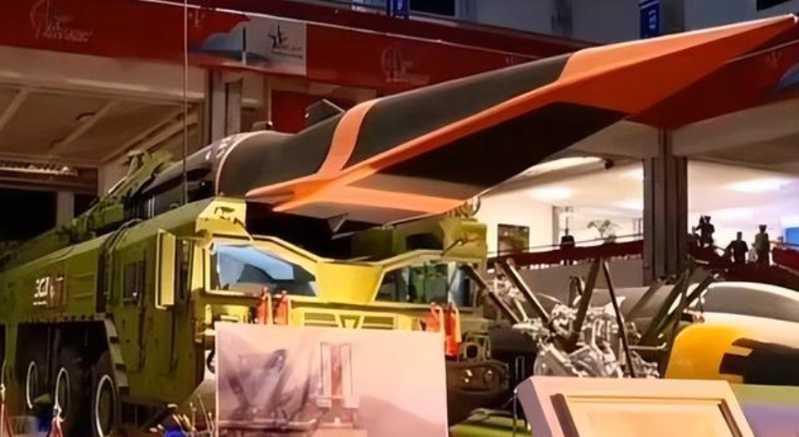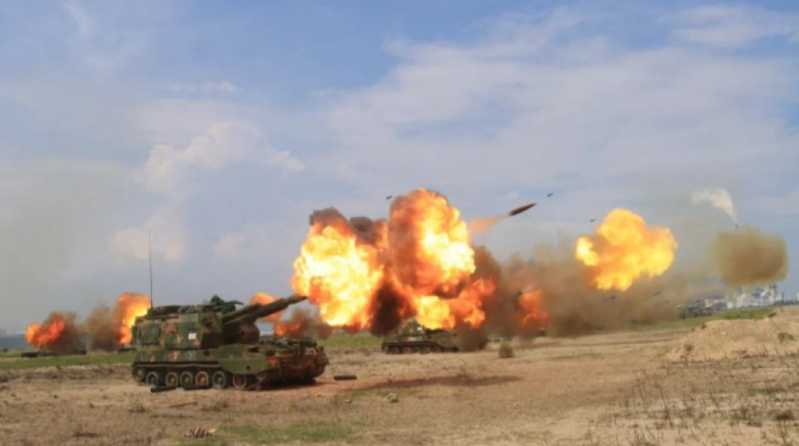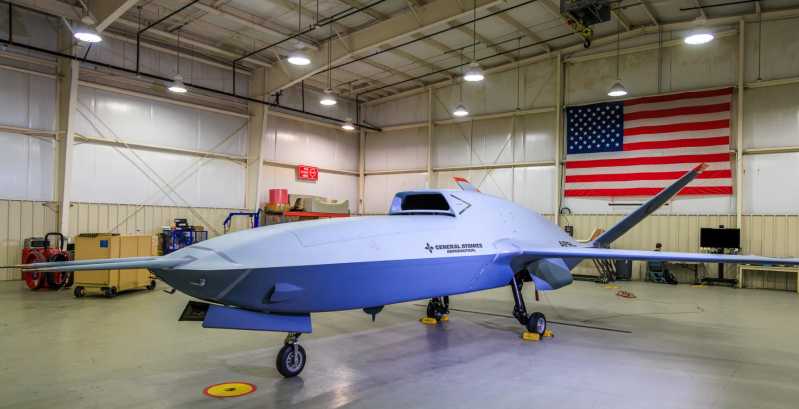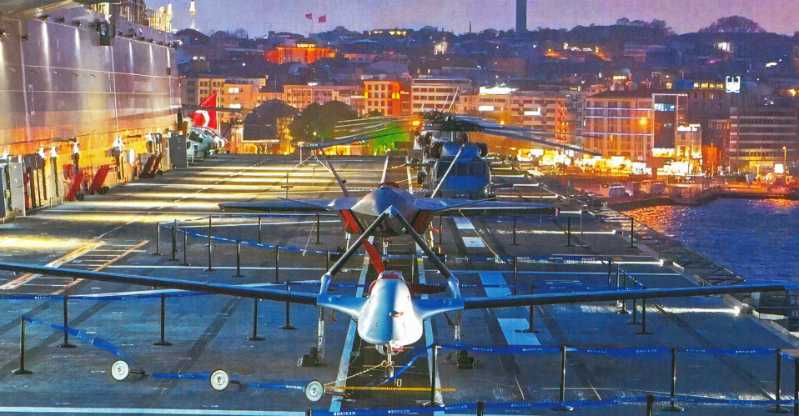On September 28, 2021, South Korean and US intelligence agencies claimed that North Korea launched a ballistic missile with a strange trajectory in Duyangli, Yonglin County, Jagang Province in the north. The next day, North Korean media announced that the Mars Artillery Unit of the People’s Army Strategic Army used the "Mars" 8 to test hypersonic missiles and distributed photos of the launch. This immediately caused a strong response in the international community. Because although North Korea conducted 5 new missile tests such as cruise missiles and railway mobile missiles in 2021, they were basically owned and mastered by the West, and this hypersonic missile is also being pursued by missile powers such as the United States and Russia. This shows that North Korea’s missile technology may be "catching up" with traditional missile powers, and the shock to the West can be imagined.
The development and testing of "Mars" 8
Although countries have different definitions of hypersonic weapons, it is generally believed that hypersonic weapons refer to weapons that fly at a speed of more than 5 times the speed of sound in the atmosphere. At present, only the United States, Russia and China have mastered or are deploying such weapons.

Development
The speculation about North Korea’s development of hypersonic missiles has been around for a long time. As early as 2015, when North Korea achieved a breakthrough in ballistic missile technology, there were reports that North Korea had set hypersonic missiles as a new development goal. During this period, North Korea focused on developing new high-heat-resistant materials and designs in missile technology. For new long-range and intercontinental missiles, North Korea used the Chemical Materials Research Institute of the Academy of Defense Science in Hamhung in the northeast as a base to develop large-scale fiber winding braiding machines and heat-resistant components such as protective covers based on carbon/carbon composite materials by introducing technology. On August 23, 2017, the top leader of North Korea visited the institute and revealed to the outside world that he had mastered the technical details of the preformed braiding process based on carbon fiber, the chemical vapor deposition process, and the high-pressure liquid deposition process. These technologies were applied to the "Mars" 14 and "Mars" 15 long-range ballistic missiles tested in 2017. However, the reentry body of the Mars 12 disintegrated during the test of flying over Japan, so the shortcomings of the high-speed reentry body design should have been discovered at that time. The breakthrough in hypersonic glide vehicle technology should be around the end of 2020. In the work summary report of the 8th Workers’ Party Congress in January 2021, Kim Jong-un said that "the task of developing and introducing hypersonic glide flight warheads in the near future has been put on the agenda." This meeting will develop hypersonic missiles and establish them as one of the five major priorities of the strategic weapons department in the five-year plan for national defense science development and weapon system development.
Test
After completing the test launch of the Mars 15 missile in 2017, North Korea claimed that it had achieved its nuclear weapons development goals. At this time, the outside world speculated that North Korea would no longer use range and payload as targets, and would turn to more advanced missile technology and practical applications. Now it seems that North Korea has developed cruise missiles, railway-mobile missiles, submarine-launched conventional missiles and many types of solid-fuel land-launched campaign-tactical missiles, including the hypersonic glide warheads tested this time and the so-called "ampouled" fuel. Due to the special international environment, North Korea is more cautious about missile tests. It was not until August 2021, when the internal contradictions between the United States and South Korea escalated and the external environment eased, that North Korea explosively tested these new weapons to minimize external doubts. From the current situation, the North Korean Academy of Defense Science tested new long-range cruise missiles on September 11 and 12, respectively, accurately hitting targets set at 1,500 kilometers away: on September 15, it successfully tested a railway-mobile missile and hit a target located in 800 kilometers of waters in the eastern waters: on September 28, North Korea once again tested a hypersonic missile beyond the expectations of the outside world. At the same time, the South Korean Joint Chiefs of Staff and the Japanese Ministry of Defense also released news that they detected that North Korea had conducted a missile test at about 6:40 a.m. that day in the Sea of Japan. The missile’s flight trajectory was "unusual" and did not use the usual parabolic trajectory. The highest point of the trajectory was only about 30 kilometers, and the range was only about 200 kilometers. North Korea claimed that through the first test launch, defense scientists confirmed the flight control performance and stability of the missile in the active phase, the guidance maneuverability of the warhead, and the gliding flight characteristics. Technical indicators, and confirmed the stability of the engine and the ampoule missile fuel system used for the first time. All technical indicators have reached the design goals. At the same time, a launch picture was distributed, showing that the warhead used a different glider design than before.
Judgment
There are some differences in the North Korean announcement. First, it did not clearly indicate that the test was successful, and secondly, it did not reveal details such as range and speed like previous cruise missiles and railway mobile missiles. Judging from the fact that the missile revealed by South Korea and the United States only flew 200 kilometers, it is far from the thrust range of the "Mars" 8 missile that they showed, so it is difficult to accurately say that its test was successful. The public statements of the US-ROK joint forces and the Japanese Self-Defense Forces all hinted that the test may not have achieved the expected purpose. In this regard, Yang Xu, an analyst at the South Korean Defense Forum, pointed out that hypersonic weapons are "game changers" and the research and development process needs to overcome difficult technical obstacles, including the extreme temperatures brought by hypersonic speed and the difficulty of controlling whereabouts. "It is hard to believe that North Korea has made any significant progress." Judging from the 200-kilometer range, even if the full flight was not completed, the verification of the main subjects may have been completed, as North Korea claimed above. Therefore, it is possible that the test did not complete the full flight, but achieved the verification of key technologies. However, even if the "Mars" 8 test launch did end in failure, it only shows that North Korea’s technical accumulation in the field of hypersonic aircraft is still somewhat insufficient, but it shows the direction of North Korea’s missile development efforts. And in any case, North Korea’s display and testing of hypersonic aircraft shows its relevant scientific research strength and design level, as well as its ambition to develop strategic missile weapons.
As if in response to Western doubts, North Korea, shortly after completing its hypersonic missile test, held the "Self-Defense-2021" National Defense Development Exhibition at the Three Revolutionary Exhibition Halls in Pyongyang, the capital, on October 12, 2021. Many strategic weapons, including all missiles disclosed in the past five years, were displayed, especially the "Mars" 8 missile and its configured hypersonic aircraft warhead. This allowed the outside world to see the full picture of North Korea’s hypersonic aircraft up close for the first time.
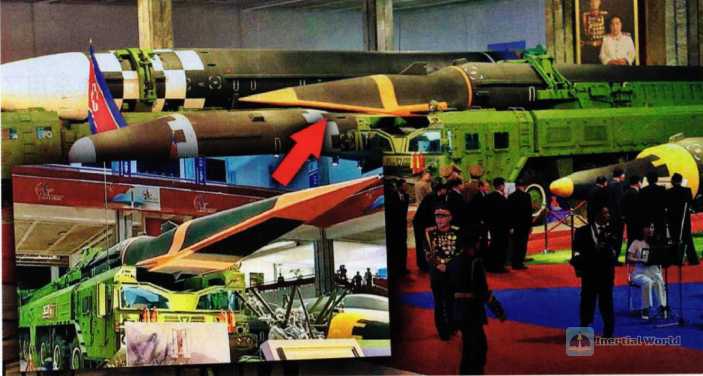
Analysis of the composition of the "Mars" 8
Since hypersonic missiles are completely different from ballistic missiles in terms of flight altitude, maneuvering range and speed, they have a good penetration effect on existing missile defense systems. Judging from the launch photos released by North Korea and the physical models at the exhibition, the Mars 8 is basically composed of a liquid rocket booster and a high-speed glider, mainly including rocket engines and internal fuel, gliders and internal warheads.
Overall design
According to relevant pictures, the total length of the Mars 8 is about 18.5 meters, and the diameter reaches 1.8 meters, of which the warhead is 11.7 meters long and the warhead is about 7 meters long. In terms of the size of the warhead, its diameter is larger than that of the Mars 12 and close to that of the Mars 14, while its length is much smaller than that of the Mars 14. Judging from the distribution of cable slots on the appearance of the missile body, it uses a single-stage rocket engine design like the Mars 12, while the Mars 14 uses a typical two-stage rocket engine. Therefore, it is very likely that it uses the first stage of the Mars 14 missile and replaces the conical warhead with a triangular glider. Judging from the size of the rocket engine, it is larger than the single-stage Mars 12 and smaller than the two-stage Mars 14. Although the weight and volume of the glider warhead are large, it has the ability to glide and can use aerodynamics to fly farther than an unpowered warhead. Therefore, the range of this configuration should be able to reach 4,000 to 5,000 kilometers. From this point of view, the 200-kilometer range in this test is indeed suspicious.
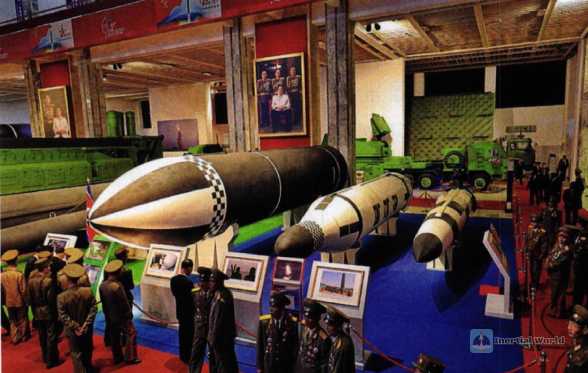
Engine
From the launch pictures, the jet flame at the tail of the "Mars" 8 missile includes the main flame in the center of the tail and four auxiliary flames evenly distributed around it. This "one main and four auxiliary" separated combined engine design is a typical feature of North Korea’s large liquid rocket engines. This design originated from the 4D10 engine used in the Soviet SS-N-6 submarine-launched missile. The 4D10 is mainly composed of one main engine and four floating engines, of which the thrust mainly comes from the main engine located in the center, and the four floating engines play the role of auxiliary propulsion and vector control. This design was used for "Mars" 10, "Mars" 12 and "Mars" 14 It has even appeared on Iran’s "Homrasahr" medium-range ballistic missile. In addition, we can also see that the tail of the missile has a typical skirt design, which is obviously expanded in a trumpet shape to adapt to the cluster engine design, and it can help the missile maintain flight stability during the boost phase in the atmosphere like a badminton tail feather. This design appeared on the "Mars" 14 missile tested in 2017.
Fuel
In its launch statement, North Korea also claimed that "ampouled missile fuel system was used for the first time." In fact, "ampouled" is a term derived from Soviet-era missile equipment, which is to use polymer materials or enamels on the inner walls of missile fuel tanks and various valves. This coating can isolate highly corrosive fuel from the original metal wall to prevent fuel from corroding the metal, so that missile fuel can be pre-packaged and stored, that is, the missile is filled with fuel into the missile fuel tank before leaving the factory. Using this anti-corrosion coating to seal the fuel Sealing the tank prevents the fuel from corroding the tank wall and causing damage and leakage. It also uses sealing to isolate the outside air and ensure the quality of long-term fuel storage. This prevents the missile from being flammable and explosive during deployment, and does not require the accompanying support of highly toxic fuels, refueling vehicles and other equipment. It also reduces the refueling process before launch and shortens the launch preparation time of the missile on the battlefield. This was once a top-secret process for Soviet missile manufacturing. At present, it has been mastered by North Korea. This technology is expected to be soon promoted to "Mars" 12, "Mars" 14, and even "Mars" 15 and other liquid fuel models, will comprehensively improve the combat response capability of North Korean missiles.
High-speed vehicle
The biggest highlight of "Mars" 8 is undoubtedly the high-speed vehicle on the top of the missile. The angle of the test launch photo initially released was the back of the vehicle, showing an axisymmetric layout. Therefore, some experts mistakenly believed that it adopted an early rotating body design similar to the hypersonic warhead of the US Army, and the technical starting point was not high. However, at the National Defense Achievement Exhibition more than ten days later, North Korea unveiled a physical model of the high-speed aircraft on the "Mars" 8 missile, and the outside world confirmed that it adopted a waverider design similar to the "Dongfeng" 17. According to the picture, the aircraft is about 7 meters long. From the front, it is basically a triangular nose + cylindrical fuselage design, and the side is wedge-shaped. The tail is connected to the missile body with a skirt-shaped transition section. The tail of the fuselage is designed with a pair of symmetrical straight trapezoidal horizontal wings and a straight trapezoidal vertical tail, and the bottom of the vehicle extends smoothly from the nose to the abdomen. Outside analysts believe that there is an oblique trapezoidal air intake slot on the belly of the high-speed aircraft. If this judgment is true, it will overturn the overall judgment of the aircraft and the understanding of North Korea’s hypersonic plan. Because if the air intake design is adopted, it indicates that it may use a scramjet engine, which is similar to the US X-51 and is a world-leading technology. The complexity of the technology even the United States has to give up. However, some people believe that this is just an aerodynamic slot, because the space in the rear half of the aircraft is too small to accommodate a ramjet or scramjet engine. The aircraft should still be a booster hypersonic glider aircraft used by most countries. From the outside of the glider, whether it is the test entity picture or the display model picture, it shows that the outside of the fuselage is covered with multiple yellow reinforcement strips, including the nose cone, the lower edge of the aircraft, the transition section from the nose cone to the fuselage, and the end of the transition section of the tail skirt of the glider. These sharp parts or deformed transition parts are the so-called "hot stagnation points" in hypersonic flight, that is, the heat and ablation here are most obvious during the friction with the air, so special materials are needed for reinforcement. According to the information disclosed by the Chemical Materials Research Institute of the Academy of Defense Science in August 2017, North Korea has mastered the manufacturing and shaping processing technology of some silicon-based carbon fiber materials, and has therefore solved the problem of anti-ablation during high-speed flight to a certain extent. Judging from the content of the North Korean announcement that verified the "guidance maneuverability and gliding flight characteristics of the missile warhead", it is likely that it uses a gliding flight body, and due to the short flight time and distance, it is impossible to verify whether the glider body’s heat protection design is successful.
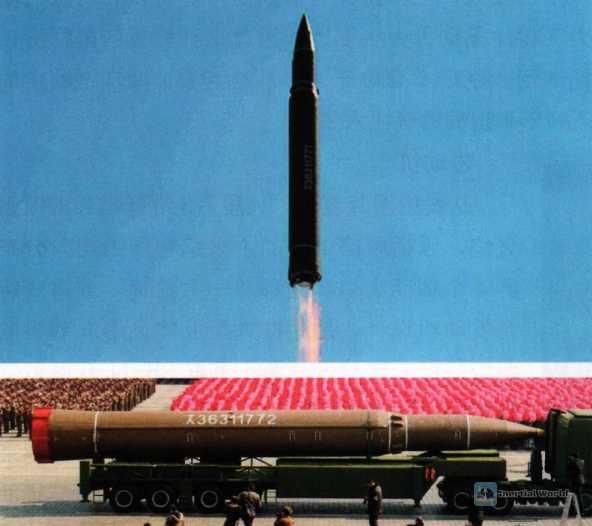
Launch vehicle
From the pictures at the exhibition, it can be seen that the Mars 8 missile uses an integral chassis transport-erection-launch three-purpose vehicle (TEL). The cabin layout is different from the design of the Mars 12 with the rear cabin higher than the cockpit, and the design of the Mars 14 with a transition section between the cockpit and the rear cabin. It is more like the design of the Mars 14 launch vehicle after the transition section is cancelled. Therefore, it is inferred that since the length of the Mars 8 missile of 18.5 meters is less than the 19.7 meters of the Mars 14, the designers cancelled the transition section, and it is inferred that the length of its launch vehicle is about 15 meters and the width is 3.35 meters. Judging from this length and the possible mass of the missile, the launch vehicle should use a 6-7 axle chassis, which actually limits the maneuvering speed and turning radius of the launch vehicle.
Performance characteristics of "Mars" 8
The flight speed of hypersonic missiles can reach more than 5 times the speed of sound. Compared with traditional ballistic missiles, which fly at high altitudes in an arc trajectory to reach their targets, hypersonic missiles usually fly laterally at a lower altitude and have higher penetration, making traditional tracking and interception more difficult. This may be the main reason why North Korea is eager to enter this field.
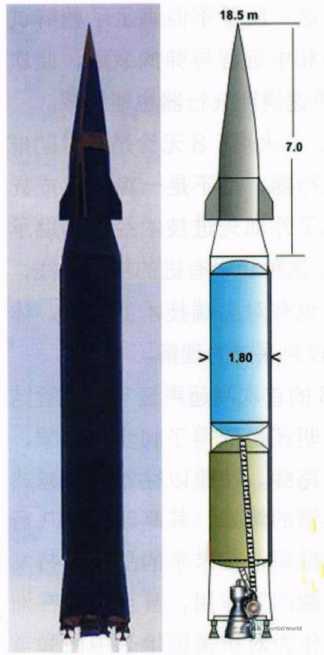
Adopting waverider design, the starting point of development is high
From the appearance of North Korea’s hypersonic glider aircraft, it adopts a high-lift body and quasi-waverider design configuration, and the exterior is composed of multiple irregular curved surfaces, and the aerodynamics are relatively complex. During hypersonic flight at high altitudes in the atmosphere, the huge thermal barrier is closely related to the lift, drag, maneuverability and thermodynamic phenomena of the aircraft. The aerodynamics that dominates the design of aircraft has been "upgraded" to aerothermodynamics, which requires a new understanding of many familiar phenomena. For example, high-altitude hypersonic aircraft do not use wings to generate lift, but use the body itself to form a lifting body, generating compression lift like a water ski towed by a speedboat on the water surface.
The waverider configuration can better utilize compression lift and shock wave lift to fly. It is usually streamlined in shape, and all leading edges have an attached shock wave design, so that its leading edge plane coincides with the upper surface of the shock wave, just like riding on the wave surface of the shock wave, relying on the pressure of the shock wave to generate lift, and therefore named "waverider". This design has the characteristics of low drag, high lift and large lift-to-drag ratio. The shape of North Korea’s glider has the approximate characteristics of an inclined cone waverider. This design can generate an asymmetric surrounding field flow when the high-speed airflow passes through the asymmetric inclined cone at the front end, and converges at the belly of the aircraft to form a shock wave to generate lift. Hypersonic aircraft with high-lift body configuration can not only maneuver on the vertical plane, but also maneuver on the horizontal plane, and even dual-element maneuvers on the horizontal and vertical planes. The maximum lateral distance of a lateral maneuver can reach hundreds or even hundreds of kilometers. At the same time, compared with ordinary ballistic missile warheads, due to the better lift characteristics of gliders, the booster stage of the same type of missile can greatly extend the range and even increase it by about 40% to 50% after replacing the hypersonic glider warhead. The supersonic glider design technology selected by North Korea is relatively advanced and complex, but the three tail fins at the tail do not seem to have special heat protection reinforcement, which is a high-incidence point for the formation of thermal standing waves. The US X-51 had an accident here, resulting in the failure of the test. From the fact that the North Korean missile flew only 200 kilometers, it seems that the warhead disintegrated soon after the warhead separated from the body.

Using pre-stored fuel, the technology is widely used
The fact that North Korea mentioned in the launch statement that it used the "missile fuel ampoule" technology for the "first time" is of great practical significance. As mentioned earlier, this technology is likely to have originated from the Soviet Union, and it is most likely that this technology was developed when the SS-N-6 submarine-launched ballistic missile was introduced or imitated. As we all know, the earliest imitation of the SS-N-6 was the "Mars" 10. Perhaps due to concerns about external sanctions or confidentiality, this type of missile has not been actually launched for many years in service. It was not until June 2016 that concentrated launches began. Most of them ended in failure, but it also laid the foundation for the development of the "Mars" 12 missile in the future. Both of them adopt the "one main and four auxiliary" combined engine layout. This layout is consistent with the "Mars" 8 missile tested this time. Although the engine was successfully copied, there has been no news to confirm that North Korea used pre-packaged storable fuel. Since the SS-N-6 is a submarine-launched missile, it needs to cruise at sea for a long time with the submarine. It is impossible to refuel in the small space on the submarine during combat. This is why most submarine-launched missiles in the world use solid fuel. The Soviet Union developed fuel pre-packaging technology for submarine-launched missiles, that is, to isolate highly toxic and highly corrosive fuels from the walls of the propellant compartment in the missile body with polymer materials, or directly put the fuel in a rubber bag, and then put the rubber bag into the fuel tank, just like the "ampoules" used in chemical experiments to hold chemical reagents. The difficulty is how to ensure that many pressure valves are also "ampouled", and multiple compartments must be constructed to ensure that the fuel will not vibrate during the flight of the missile, while ensuring stable and controllable pressure when entering the combustion chamber. In addition, the development of highly stable fuel is also a top priority. This Soviet technology was subsequently extended to various types of land-based intercontinental ballistic missiles with liquid fuel. New high-energy fuels such as hydrazine are usually highly corrosive, and they need to be "ampouled" whether they are stored under or on the missile. The mastery of this technology has given North Korea’s current large number of liquid missiles a new combat effectiveness. These missiles can be refueled when they leave the factory, and can be stored or on standby for several years. After a simple inspection, they can be erected and launched, which undoubtedly reduces maintenance costs and improves the missile’s responsiveness. At the same time, it also reduces the fuel transportation and refueling equipment in the missile launch unit, reducing the possibility of being discovered and attacked.
Engine technology continues, with good versatility
"Mars" 8 uses the first-stage engine of the "Mars" 14 missile. This "one main and four auxiliary" separated combined engine design has been widely used in various types of large liquid-fuel ballistic missiles in North Korea since the "Mars" 12. The outside world is very confused about the positioning of the "Mars" 14. Because the 3,500-kilometer range within Guam is covered by the Mars 12, and the 7,500-kilometer range to the U.S. mainland is covered by the Mars 15. The Mars 14 seems to fill the range within 6,500 kilometers, but only Hawaii is within this range, which can be completely covered by the Mars 15. The Mars 14 may seem useless, but from the perspective of technological continuity today, the Mars 14 is of great significance. It not only verifies the feasibility of the Mars 12’s range extension, but also derives the Mars 8, making it a general medium-range missile platform. The range of the Mars 8 should be close to that of the Mars 12, because the use of a gliding vehicle lowers the trajectory and loses the optimal ballistic energy, but the range can be extended by 1,000 to 2,000 kilometers through gliding, bringing the overall range of the Mars 8 to 4,000 to 5,000 kilometers. Although this range is still uncertain, as a technical verification, the hypersonic glider can be used for both the intercontinental "Mars" 15/16 and the medium-range "Mars" 12, and can even be reduced to the "Mars" 11 with a range of 800 kilometers.
From the evolution of the engine, the outside world is very suspicious of the name and serial number of "Mars" 8. Because "Mars" 8 uses the first-stage engine of the "Mars" 14 missile, the missile serial number can only be later than "Mars" 14. According to the booth arrangement of North Korea’s defense exhibition this time, it should be in the position of "Mars" 18, but the title of "Mars" 18 has not appeared yet. Therefore, the outside world believes that North Korea used the code name of the previously failed "Mars" 8 missile to show that its hypersonic missile technology started early, or to deliberately confuse its code name for confidentiality.
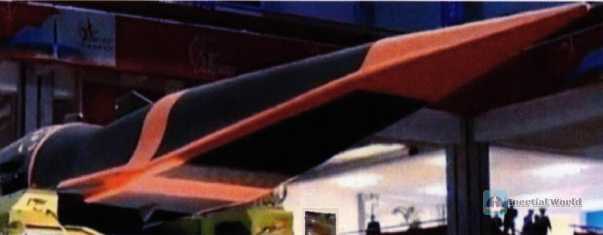
The glider has a large space and great nuclear and conventional potential
As we all know, if the volume is not taken into account, the energy of liquid fuel of the same mass is higher than that of solid fuel, which means that liquid missiles of the same mass of fuel have greater thrust than solid missiles, which makes the use of liquid fuel more attractive in driving hypersonic glider warheads with larger loads. Therefore, many countries in the world first consider liquid fuel missiles when developing hypersonic gliders, multiple independently targetable reentry vehicles, and heavy warheads. According to the structure, the part between the yellow heat-resistant reinforcement belt at the nose cone and the yellow reinforcement belt at the waist of the aircraft should be the effective warhead of the glider. It is calculated that the part is about 2.4 meters long, 0.4-1.1 meters wide, and 0.2-0.5 meters high. The internal space is large enough to carry 0.8-1.2 tons of high explosives, or the thermonuclear warhead announced by North Korea. As early as 2009, when North Korea conducted its third nuclear test, it claimed that it was conducting a test explosion of a "miniaturized" nuclear weapon. In May 2015, North Korea claimed that its "nuclear strike capability has been miniaturized and diversified." On March 9, 2016, when the top leader of North Korea visited the missile factory, he said that North Korea had achieved the miniaturization, standardization and serialization of nuclear warheads, which is convenient for ballistic rockets to carry. Judging from the pictures at that time, the "miniaturized nuclear warhead designed and manufactured by the North Korean mixed charge structure" should be the core component of a miniaturized implosion-type atomic bomb. Later, the hydrogen bomb structure of the primary-secondary two-stage design was displayed. Based on this, the outside world estimates that the mass of North Korea’s fission warhead is about 600 kilograms, and the mass of the two-stage fusion warhead is within 1,000 kilograms. This mass not only meets the loading requirements of almost all medium-range missiles and medium-to-long-range missiles that North Korea has tested, but also can be loaded by the "Mars" 8 hypersonic glide vehicle tested this time.
From the above analysis, it can be seen that whether it is a missile booster or a hypersonic glide vehicle, "Mars" 8 is not developed overnight or out of thin air. They are all derived from the absorption of external advanced technical experience and the inheritance of previous development results. This steady and progressive technical route not only inherits mature technology, but also explores cutting-edge technology, reflecting North Korea’s deeper understanding of missile weapon systems. In general, the results of the first hypersonic flight test of "Mars" 8 are not very ideal, but North Korea has stated that it has achieved initial results and has determined the initial technical route for development. According to North Korea’s previous practice of leapfrog development and frequent trial and error at the risk of failure, the development of its hypersonic aircraft will eventually yield certain results, and will play a "kicking in the door" role in breaking through the anti-missile defense system in future wars. It may even use such warheads on intercontinental missiles as a "trump card" to counter the U.S. Ground-based Midcourse Ballistic Missile Defense System, creating a real combat deterrent effect on the United States.


